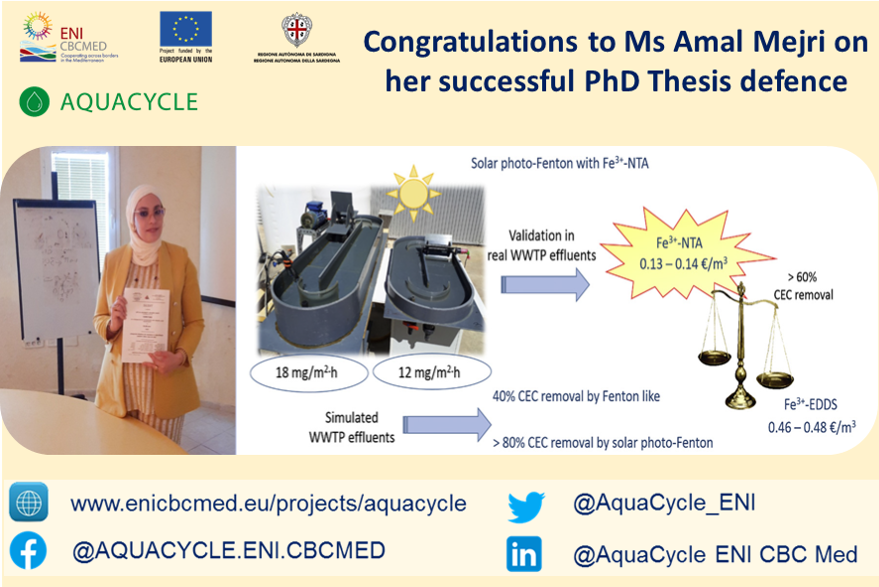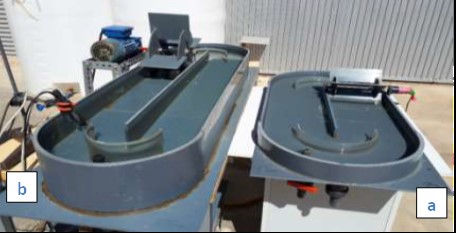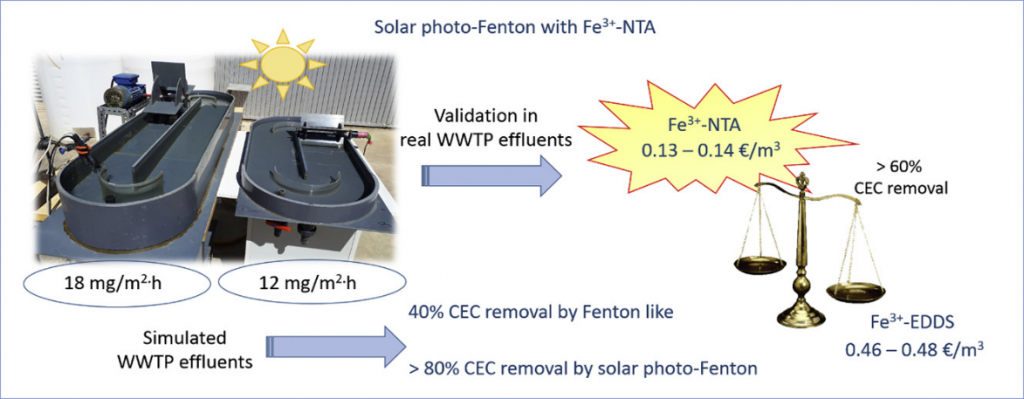AQUACYCLE PhD Thesis on Identification and Treatment of Emerging Contaminants

Ms Amal Mejri successfully presented her PhD thesis dissertation at National Engineering School of Sfax (ENIS) on 05 July 2021.
Her PhD thesis was carried out at the Department of Geology, University of Sfax, between September 2016 and June 2021. Her work was conducted in the framework of a joint collaboration between the Laboratory of Wastewater Treatment and valorization of Water Rejects (LTVRH) at Water Research and Technology Center (CERTE), Carthage University, the the Department of Geology, National Engineering School of Sfax (ENIS), University of Sfax, Tunisia, and the Solar Energy Research Centre (CIESOL), at Almeria University, Spain.
The main contribution of this PhD thesis is the application of one of the most efficient and environmentally sustainable advanced oxidation processes (AOPs), the solar photo-Fenton process, for wastewater treatment at pilot scale. Her study investigated the use of solar photo-Fenton process through scalable and low-cost Raceway Pond Reactor (RPR) to remove contaminants of emerging concern (CECs) from simulated and real urban WWTP secondary effluents at neutral pH.
Among other aspects, Ms Amal Mejri’s research investigated the optimum liquid depth to be maintained in the RPR at the laboratory scale.


The Raceway Pond Reactor (RPR) is the third and final component in AQUACYCLE’s low-cost, eco-innovative wastewater treatment (APOC) system. The APOC system consists or an Anaerobic Digester, Constructed wetlands and Photocatalytic Oxidization, i.e. solar disinfection through the Raceway Pond Reactor.
- About the solar photo-Fenton process
-
The solar photo-Fenton (SPF) process involves the irradiation of water containing iron (as a catalyst) and H2O2 to promote the generation of the highly powerful oxidative and nonselective hydroxyl radical, giving rise to the removal/inactivation of organic pollutants and microorganisms. Recently, the spreading of the so-called antibiotic-resistant bacteria and their counterpart genetic elements (antibiotic-resistant genes) has become a highly concerning challenge for WW discharge and/or reuse due to the risk/impact on health for humans and the environment.
Source: María Inmaculada Polo-López, José Antonio Sánchez Pérez (2021) Perspectives of the solar photo-Fenton process against the spreading of pathogens, antibiotic-resistant bacteria and genes in the environment. Published in Current Opinion in Green and Sustainable Chemistry, Volume 27, February 2021, 100416 https://doi.org/10.1016/j.cogsc.2020.100416
A more detailed abstract of Ms Amal Mejri’s PhD Thesis can be downloaded through this link.









